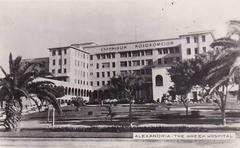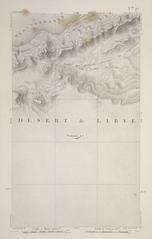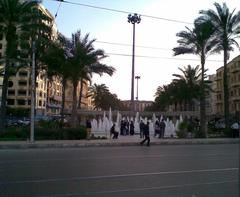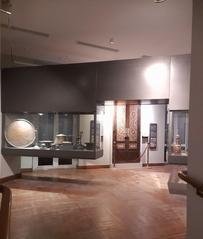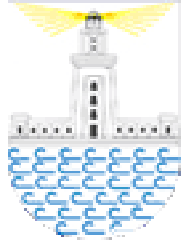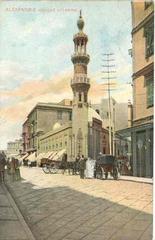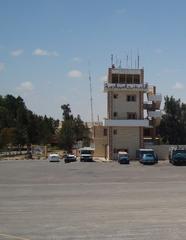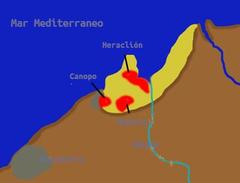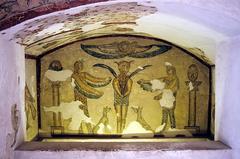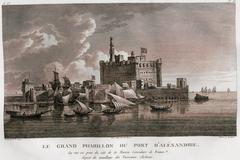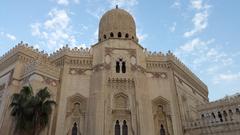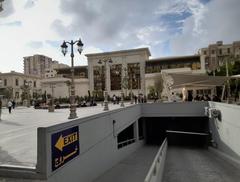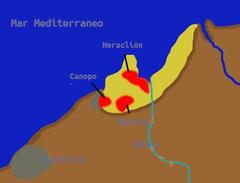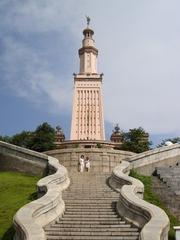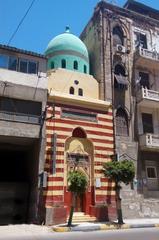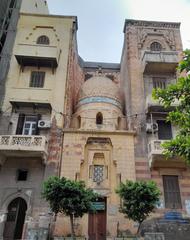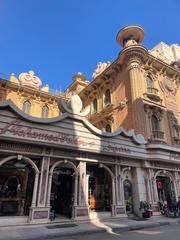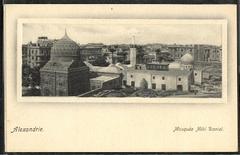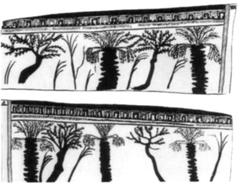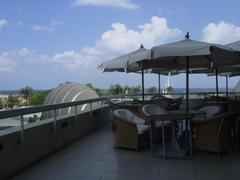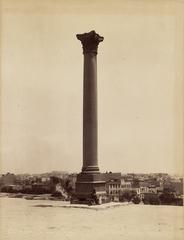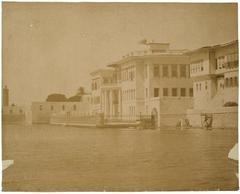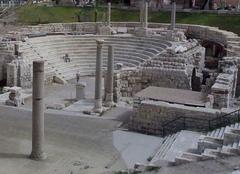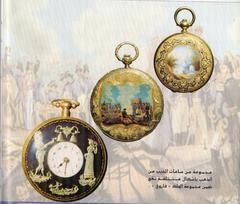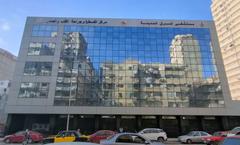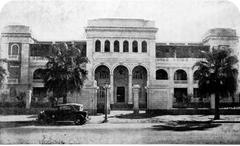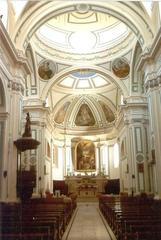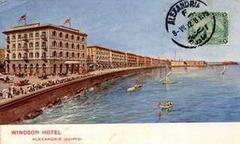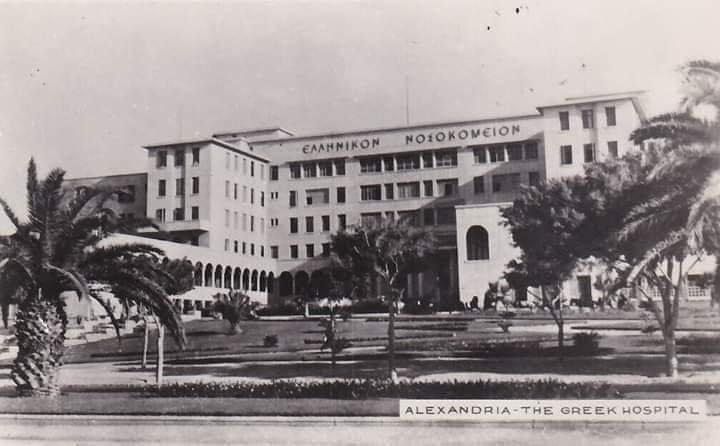
Gamal Abdel Nasser Hospital Alexandria: Visiting Hours, Tickets, and Visitor Guide
Date: 14/06/2025
Introduction
Gamal Abdel Nasser Hospital in Alexandria, Egypt, is more than a leading healthcare institution—it’s a living monument to the nation’s commitment to social justice, public health, and medical innovation. Established as part of Egypt’s modernization efforts following the 1952 revolution, the hospital carries forward the visionary ideals of President Gamal Abdel Nasser. Its central location on Alexandria’s Nile Corniche makes it accessible to both local residents and international visitors, while its proximity to famed landmarks, such as the Citadel of Qaitbay and the Alexandria National Museum, adds cultural richness to any visit (Nasser Youth Movement; World History Edu).
This comprehensive guide explores the hospital’s history, architecture, medical services, visiting protocols, and its broader significance within Alexandria’s urban and cultural landscape. Whether you are seeking medical care, visiting a patient, or interested in modern Egyptian landmarks, this article will equip you with practical information and valuable insights.
Table of Contents
- Hospital Origins and Vision
- Construction, Inauguration, and Architecture
- Medical and Research Excellence
- Visitor Information: Hours, Tickets & Accessibility
- Role in Alexandria’s Healthcare System
- Social and Cultural Significance
- Modernization and Infrastructure
- Nearby Historical Sites and Attractions
- FAQs
- Summary and Final Tips
- Sources and Official Links
Hospital Origins and Vision
Gamal Abdel Nasser Hospital, also referred to as the Nasser Institute for Research and Treatment, was conceived as part of Egypt’s broader post-revolution initiative to expand equitable access to public health services. President Nasser’s vision was to create a modern, inclusive medical facility that would serve all segments of Egyptian society, embodying the principles of social justice and national development (Nasser Youth Movement). Although the project was delayed by economic and political challenges, it was revived in the 1980s as a tribute to Nasser’s enduring legacy.
Construction, Inauguration, and Architecture
Construction commenced in the early 1980s on a prime site along the Nile Corniche, spanning approximately 104,000 square meters—half of which is devoted to landscaped gardens and green spaces meant to facilitate healing. The hospital officially opened on July 12, 1987, aligning with national commemorations of the July 23 Revolution. The facility comprises a main building and nine auxiliary structures, providing a total of 682 beds. Its architectural design emphasizes patient comfort, accessibility, and integration with Alexandria’s urban environment (Nasser Youth Movement).
Medical and Research Excellence
Gamal Abdel Nasser Hospital is recognized for its advanced clinical services, which include:
- Specialized surgical procedures
- Precision radiation therapy
- Comprehensive emergency and trauma care
- Extensive diagnostic services
The hospital also serves as a major research and teaching center, offering accredited training programs and fostering medical innovation in collaboration with leading institutions such as Alexandria University. Its regional role is underscored by its position as the largest emergency and accident center in northern Egypt, catering to both Egyptian citizens and international patients, particularly from Arab and African countries (Nasser Youth Movement).
Visitor Information: Hours, Tickets & Accessibility
Visiting Hours:
- General patient visiting hours: 9:00 AM to 7:00 PM daily (may vary by department—call ahead to confirm).
- Emergency services: Open 24/7.
Tickets & Admission:
- No entrance fee is required for visitors. Access to certain areas is restricted to patients, staff, and authorized guests.
- Guided tours for educational or historical interest can be arranged by contacting hospital administration in advance.
Accessibility:
- Wheelchair-accessible entrances and facilities.
- Centrally located, the hospital is easily reached by public transportation, taxi, or private vehicle.
Language Support:
- Arabic is the primary language, with some staff also speaking English and French. International visitors needing language assistance are advised to arrange for a translator (Placedigger).
Visitor Etiquette:
- Modest dress is expected.
- Security checks are standard at the entrance.
- Photography inside the hospital is not allowed without permission.
Role in Alexandria’s Healthcare System
Gamal Abdel Nasser Hospital is a cornerstone of Alexandria’s public healthcare network. It provides subsidized or free medical services for eligible patients and supports national health initiatives such as vaccination campaigns and disease screenings. The hospital operates as a teaching institution, shaping Egypt’s next generation of healthcare professionals in partnership with academic institutions.
In times of public health emergencies or crises, the hospital is a frontline responder, coordinating with government agencies to deliver rapid, effective care (World History Edu).
Social and Cultural Significance
The hospital is a symbol of Egypt’s pursuit of social justice and national progress. Named after one of Egypt’s most influential leaders, it stands as a testament to public service ideals and inclusivity. Gamal Abdel Nasser Hospital continues to serve Alexandria’s diverse population—Egyptians of all backgrounds as well as international visitors (Britannica; Protothema).
Beyond its medical mission, the hospital engages in community outreach, preventive health education, and public awareness events, reinforcing its role as a socially responsible institution.
Modernization and Infrastructure
Continual investment has enabled the hospital to modernize its facilities, expand capacity, and upgrade medical technology. Challenges common to public hospitals in Egypt—such as funding limitations and infrastructure maintenance—are addressed through ongoing government support and institutional partnerships. Patient-centered care, cultural sensitivity, and dignity remain at the core of its operations.
Nearby Historical Sites and Attractions
A visit to Gamal Abdel Nasser Hospital can be complemented by exploring Alexandria’s renowned historical and cultural sites, including:
- Citadel of Qaitbay: A 15th-century fortress on the Mediterranean Sea, built on the site of the ancient Lighthouse of Alexandria (Alexandria Tourism Official Website).
- Alexandria National Museum: Offers insights into the city’s ancient and modern history.
- Bibliotheca Alexandrina: A modern cultural and architectural landmark.
- Montaza Palace Gardens: Expansive royal gardens with scenic Mediterranean views.
These attractions are easily accessible from the hospital, making it possible to combine medical visits with cultural exploration.
FAQs
Q: What are the hospital’s visiting hours?
A: General visiting hours are from 9:00 AM to 7:00 PM daily, but may vary by department and current public health policies. Emergency services operate 24/7.
Q: Is there an entrance fee?
A: No, the hospital does not charge entrance fees for visitors.
Q: Are guided tours available?
A: Guided tours for educational or historical purposes can be arranged by contacting hospital administration in advance.
Q: Is the hospital wheelchair accessible?
A: Yes, the hospital is fully accessible for visitors with disabilities.
Q: What languages are spoken?
A: Arabic is the primary language; English and French are spoken by some staff.
Q: Can I take photographs inside the hospital?
A: Photography is prohibited without prior permission.
Q: What is the best way to reach the hospital?
A: The hospital is centrally located on the Nile Corniche and is accessible by public transport, taxi, or private vehicle.
Q: Are there nearby attractions to visit?
A: Yes, notable nearby sites include the Citadel of Qaitbay, Alexandria National Museum, Bibliotheca Alexandrina, and Montaza Palace Gardens.
Summary and Final Tips
Gamal Abdel Nasser Hospital Alexandria stands as a testament to Egypt’s enduring commitment to health equity, national development, and scientific progress. It offers advanced medical services, research, and training, all within a landmark architectural setting. The hospital’s central location allows visitors and patients to easily access Alexandria’s cultural and historical attractions.
Visitors should always verify current visiting hours and any pandemic-related restrictions directly with the hospital before arrival. If you plan to explore the hospital’s architectural or historical aspects, arrange your visit in advance with administration.
Enhance your Alexandria experience by exploring nearby historical sites, and stay informed about Egypt’s healthcare and tourism updates by downloading the Audiala app and visiting official websites. This institution truly embodies Egypt’s blend of history, culture, and medical excellence.
Sources and Official Links
- Nasser Youth Movement
- World History Edu
- Protothema
- Britannica
- Alexandria Tourism Official Website
- Placedigger
- Alexandria University Faculty of Medicine
- Egypt Ministry of Health and Population
- World Health Organization Egypt
- Bibliotheca Alexandrina
- Egyptian Ministry of Tourism
- Audiala App Download
